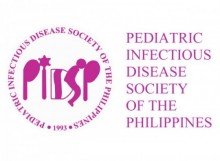Journal 2020 Vol.21 No.2
Clinical and Bacteriologic Profile of Neonatal Sepsis in a Tertiary Care Hospital: A 5-Year Review
Edelsa S. Azurin, M.D., Anne Kristine Claire G. Marasigan, M.D., Joanna Valerie J. Ang, M.D., DPPS
Abstract
Background:
Neonatal sepsis, a clinical syndrome characterized by non-specific signs and symptoms, is the most common cause of neonatal mortality and morbidity. It is classified into early or late-onset depending on the onset of symptoms, if within the first 72 hours or later. Early onset sepsis (EOS) occurs due to ascending infection following rupture of membranes or during passage through an infected birth canal. Late onset sepsis (LOS) can be nosocomial or community-acquired. A high index of suspicion and timely and judicious use of antibiotics are needed to achieve good outcomes.
Objective:
This study looked into the clinical and bacteriologic profile of neonatal sepsis in a tertiary care hospital from January 2013 to December 2017.
Methodology: This was a retrospective observational study. Data on maternal risk factors, mode of delivery, gestational age, birth weight, birth setting, clinical manifestations, and blood culture and sensitivity were gathered. Descriptive statistics was used to analyze the data.
Results: Majority of cases were late onset sepsis with an equal distribution in those born via normal spontaneous delivery (NSD) and cesarean section (CS). There were more culture- positives in low birth weight (LBW) infants and those not delivered within a hospital. The most common maternal risk factor was UTI. Majority of culture-positive newborns presented with respiratory distress, poor feeding, fever, and irritability with respiratory distress being the most common manifestation for both EOS and LOS. Predominant isolates were CONS, E. coli and Klebsiella sp. Both E. coli and Klebsiella were resistant to both first-line empiric antibiotics – ampicillin and gentamicin but highly sensitive to piperacillin-tazobactam and imipenem.
Conclusion: Clinical signs and symptoms of neonatal sepsis are non-specific. The presence of respiratory distress, fever, poor feeding, and irritability together with other risk factors should raise suspicion for sepsis and prompt investigation and treatment. Predominant isolates seen were CONS, E. coli and Klebsiella sp. with resistance to first-line empiric antibiotics.
Keywords: neonatal sepsis, early-onset, late-onset, risk factors, clinical signs and symptoms, antibiotic sensitivity
https://doi.org/10.56964/pidspj20202102005
| View Full Article in PDF format |
Journal 2020 Vol.21 No.2 Original Articles 4pidsp@uplink.com.ph2022-12-11T04:44:32+00:00
